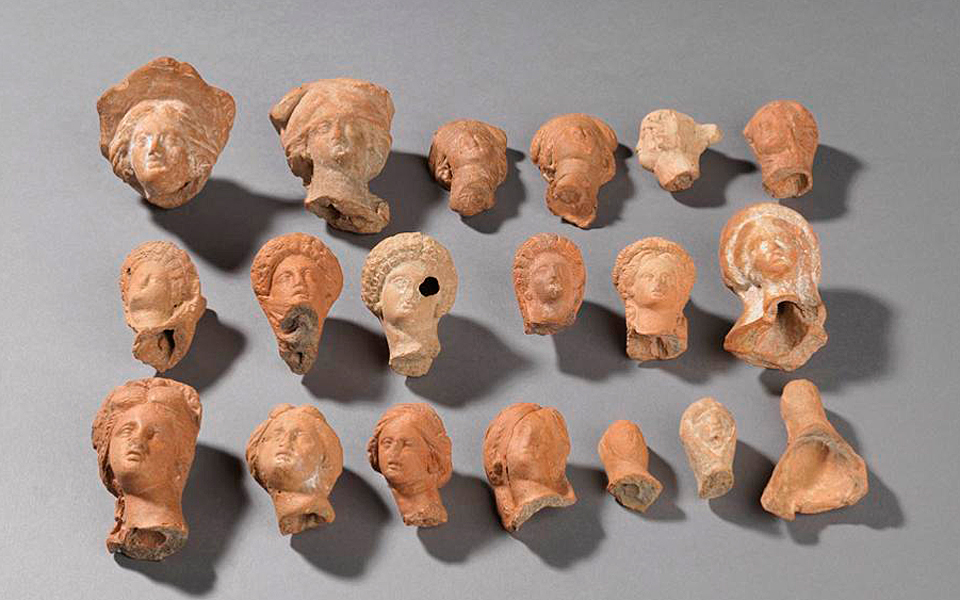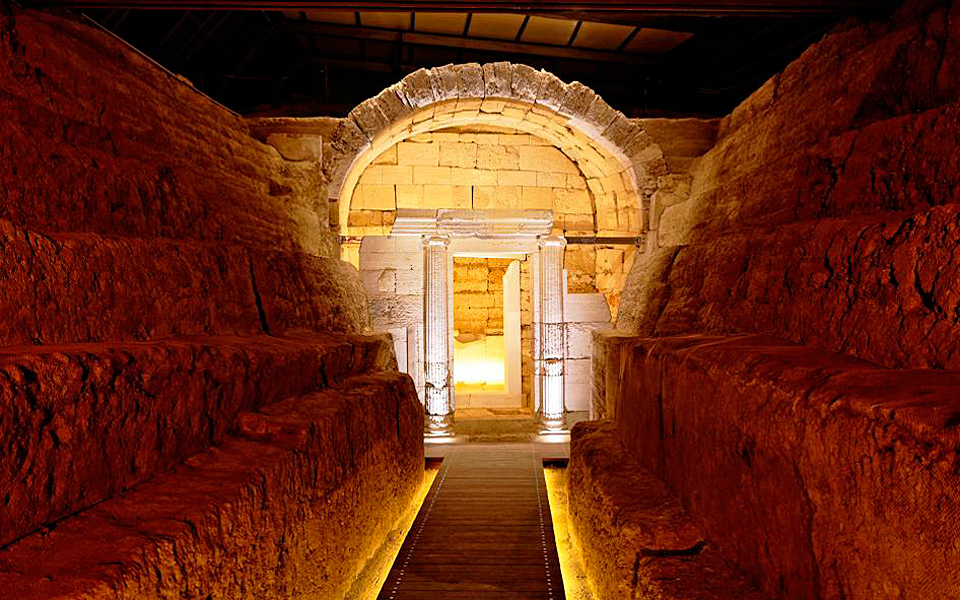The marble door that once sealed its entrance is on display at the Istanbul Archaeology Museums, the most striking find made by Greek Ottoman-era archaeologist Theodore Makridi during his excavations of a tomb in Derveni, near Thessaloniki, two years before the northern Greek port city was liberated.
The double-chambered barrel-vaulted tomb is among the greatest discoveries in the area and has been associated with Lete, one of the greatest cities of the ancient Kingdom of Macedonia. Nevertheless, and despite the archaeologist’s concerns about the protection of the tomb that was named after him, it lay almost completely abandoned for over a century.
The elements did their worst and this beautiful historic structure was at the point of collapse in 2011, when it was finally slated for restoration and protection under the European Union structural funds programme for 2007–2013, with a budget of 1.2 million euros. Work on the site commenced in 2012 and was completed last year, so that now the Tomb of Makridi Bey, as it is known, constitutes one of the highlights of Thessaloniki’s historic sites (with details soon available online at www.macedoniantombofmakridybey.culture.gr).
Dated to between the late fourth and early third century BC, with a monumental façade in the Ionic rhythm and a marble sarcophagus in the death chamber, the tomb is a splendid sample of architecture and burial rites, as well as evidence of the incredible wealth that poured into the Kingdom of Macedonia with the return of Alexander the Great’s army from its Eastern campaign.
“The tomb is a splendid sample of architecture and burial rites, as well as evidence of the incredible wealth that poured into the Kingdom of Macedonia”

“When we took over, the condition of the tomb was lamentable. The structure was distorted and the antechamber had settled onto the scaffolding that had propped it up since 1997,” says architect and restorer Fani Athansiou.
An interdisciplinary team of experts conducted a dozen studies before any moves could be taken to start restoring the structure and to protect the site with a solid and innovative shelter, part of which is submerged in the ground. The team (comprising Venetia Malama, Maria Miza, Maria Sarantidou and Alexis Papasotirou) then proceeded to restore the road that led up to the tomb, its Ionic facade and the original colors of the plaster that adorned its walls and arches.
Restored and illuminated at night, the monumental tomb – 10 meters in length and 8 meters in height – constitutes yet another piece of evidence in the narrative shaped by a plethora of other finds on the strategic significance of Lete, a city that was inhabited from early Neolithic (5,600–5,300 BC) to Roman times, archaeologist Katerina Tzanavari explains. Built before Thessaloniki, it was a fortress on the narrow stretch between the plain of Langadas and Lake Koroneia, and experienced its peak during the reign of Philip II.
Excavations in the vicinity have also brought to light the Sanctuary of Demeter and Kore (1936), unlooted graves from a large Archaic cemetery (1962), the ancient settlement and masterpieces in metal and gold (including the famed Derveni Krater, metal utensils, precious vessels, marble statues and the Derveni Papyrus). These finds grace the permanent collection halls of the Archaeological Museum of Thessaloniki.
*Original published by kathimerini.gr
“Excavations in the vicinity have also brought to light the Sanctuary of Demeter and Kore (1936), unlooted graves from a large Archaic cemetery (1962), the ancient settlement and masterpieces in metal and gold”












